Through a layered multimedia creative process, German artist Cathrin Hoffmann took the time to explain the origin behind her otherworldly creations. She delved into her past as a creator, whose comfort zone lies originally in graphic design. Despite having started “late” in the art world race, Hoffmann has continually made an impression on the viewer. She passes us through her universe of imperfection and graphic distortion to converse about beauty and other emotional cues. As spectators, we are placed in an entirely contrived universe of hot pink figures that through their bodily confidence will convey sentiments of love, beauty, sexuality and humanity, in infinitely layered variations. Read below to learn more about the artist, her upbringing, and her recent path as a professional artist.
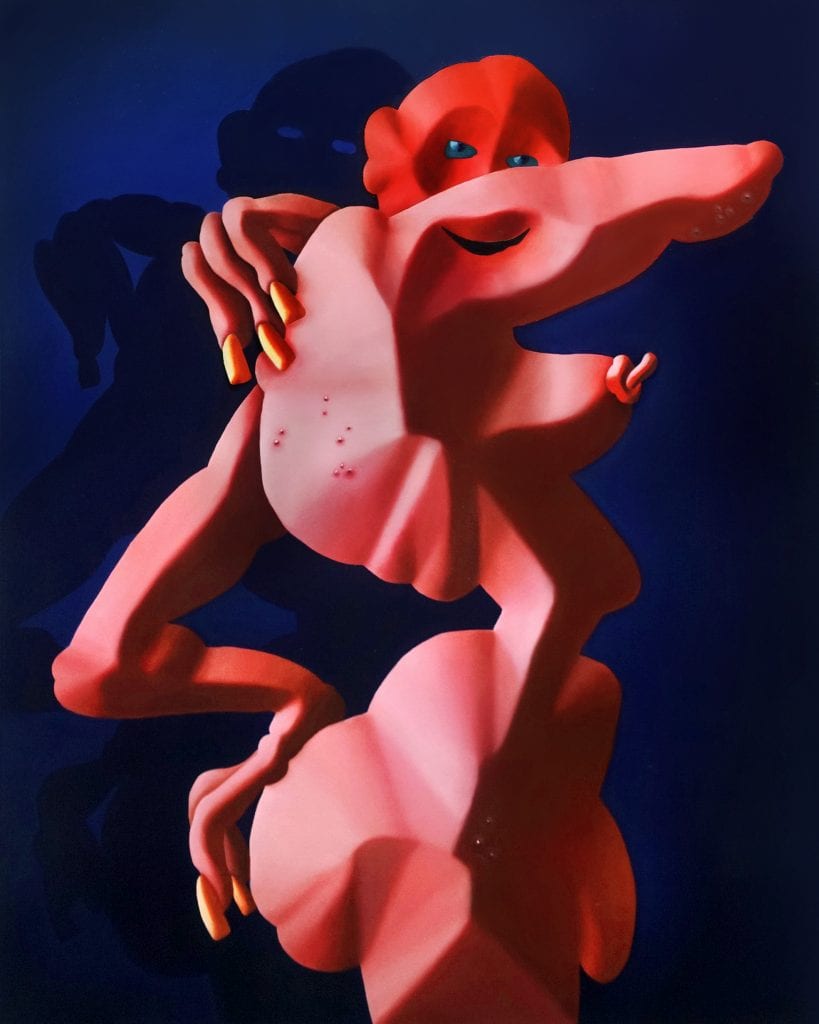
That Spread Fast, 2020, Oil on Canvas, Courtesy of the Artist
Tell us a little bit about yourself. Where are you from and how did art first come into your life?
I’m originally from a small town in Northern Germany. I grew up in a family that wasn’t very artistic upfront, but my mom and dad did have a shared passion for performance. Even before I was born, they would put plays together, making the costumes and stage design, and my mother taught belly dancing on the side. So there was definitely creative energy in the home, but it was always a sort of hobby to everyday life.
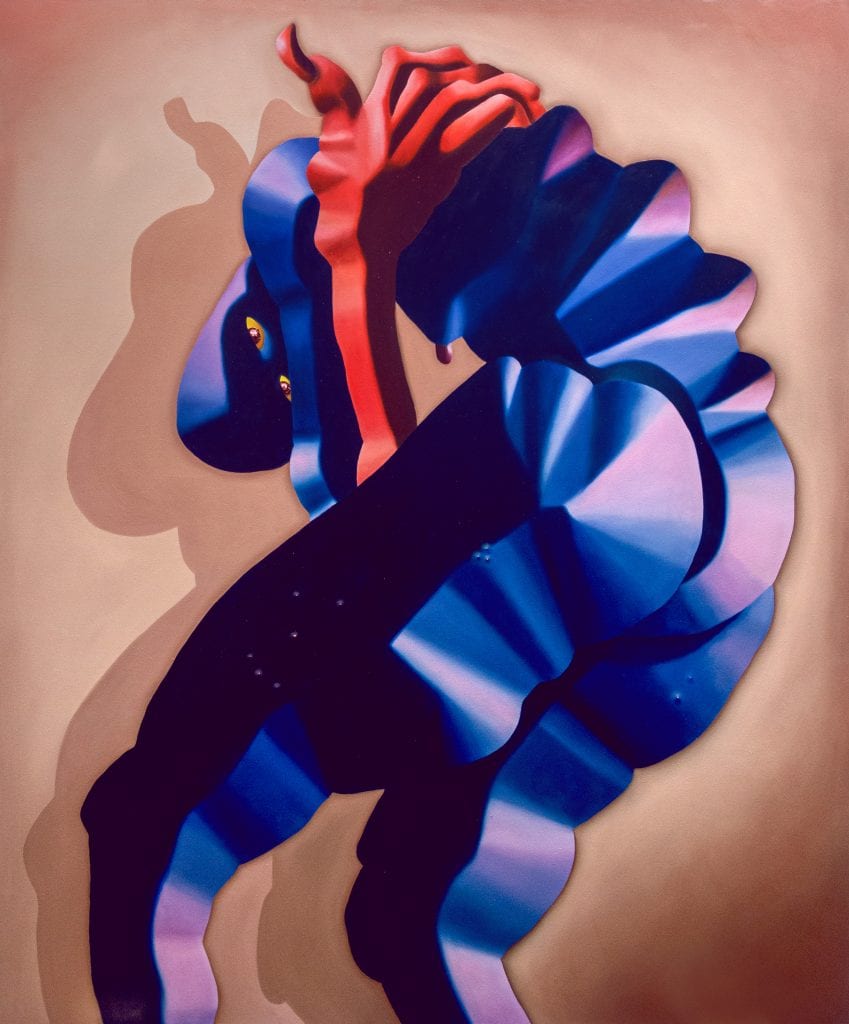
I Agree With Your Look of Horrified Realization, 2020, Oil on Canvas, Courtesy of the Artist
Has your work always taken on the style it currently embodies?
A lot of people have told me that through the characters I produce they feel a sense of the uncanny. The distorted and somehow fractured characters, I’ve always been drawn to that. Even as a child, I remember making up my own characters, and they were always the weird ones in the bunch. And I’ve always been drawn to figurative subjects, personalities, faces, or expressions.
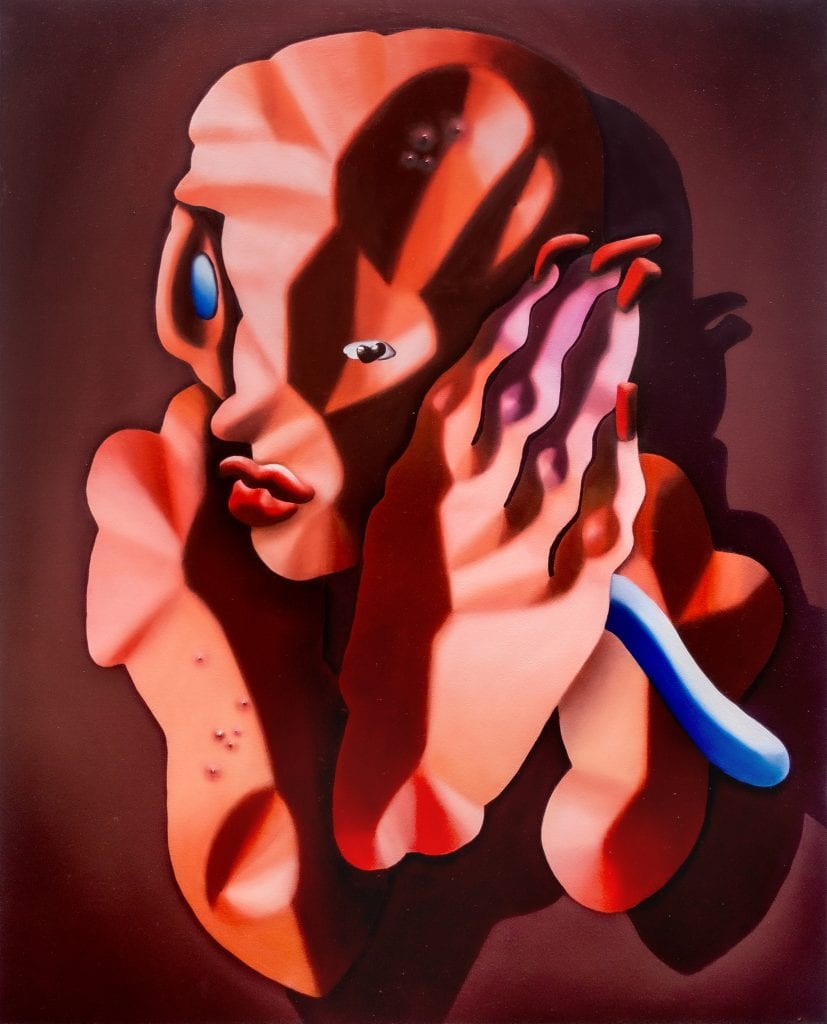
Is It Not A Voluntary Concern?, 2020, Oil on Canvas, Courtesy of the Artist
What is your process like? How do you begin a work?
Now that I’m more comfortable with painting and holding the pen, I do drawings to start on my work. But I can’t say that’s how I started in the past. I wasn’t able to touch the paper and pencil until recently. And now I’m getting in the habit of using both, depending on my needs, and whichever works better.
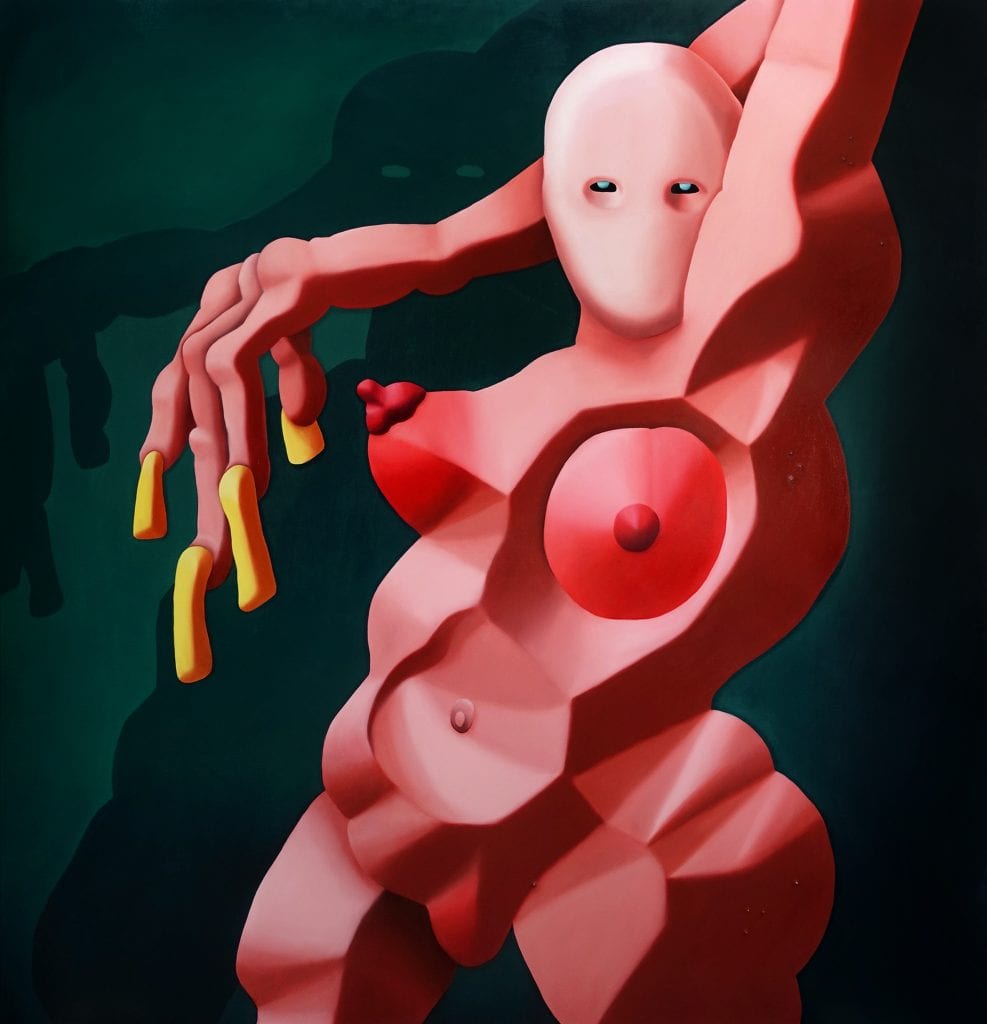
No,That’s Not The First Part Of A Magic Trick, 2020, Oil on Canvas, Courtesy of the Artist
From where do you draw inspiration?
That’s a tough one because I wouldn’t declare inspiration, it’s more about the things that awake something in me. I feel I absorb these real life moments, and it continues moving, I carry it around, and from that comes the artwork.
Walk us through a day in the studio.
Although I really like to work at night, I had to find a way to get myself a proper sleep schedule, because I started losing connection with my surroundings. I try to come to the studio in the morning, and I have a shared studio with another artist, and I’m here until late evening.
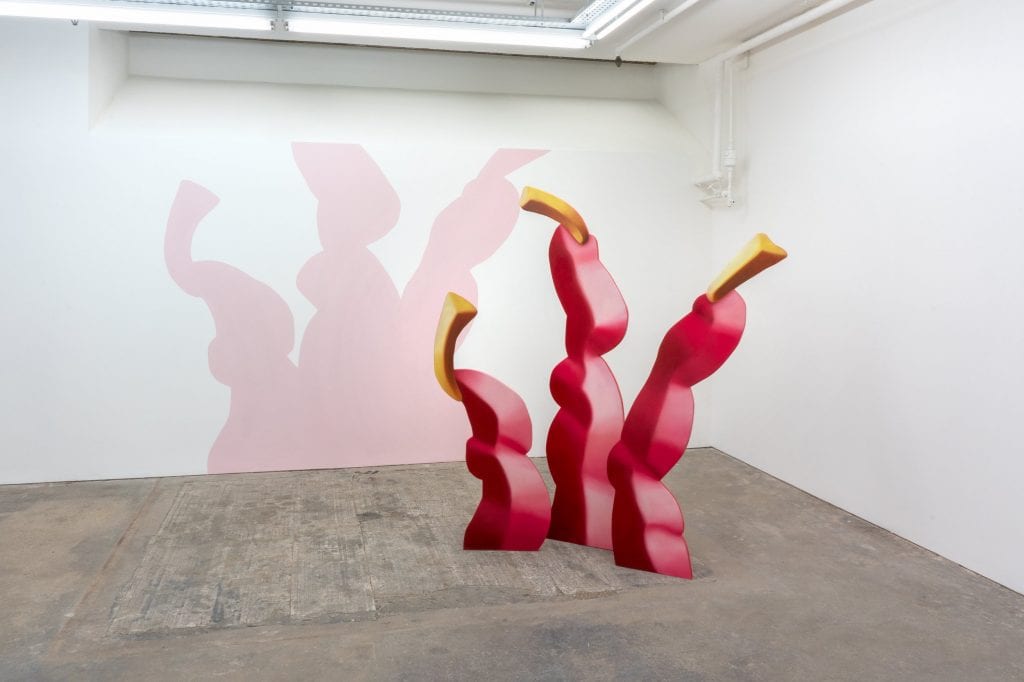
Installation View, It Still Smells of Nothing, 2020, Courtesy of the Artist and PUBLIC Gallery
Your work takes on multiple forms of medium. Do you have a favorite?
Since I just started doing sculptures, I wanted to spend more and more time doing so. Although I’m always doing both, because sculptures come from the paintings, sculpture is definitely something I want to dive more in my upcoming work.
But I feel that I’m very drawn to whatever I haven’t experimented with yet. I look forward to doing movies and film, also working with music, but for now I want to explore sculpting more.
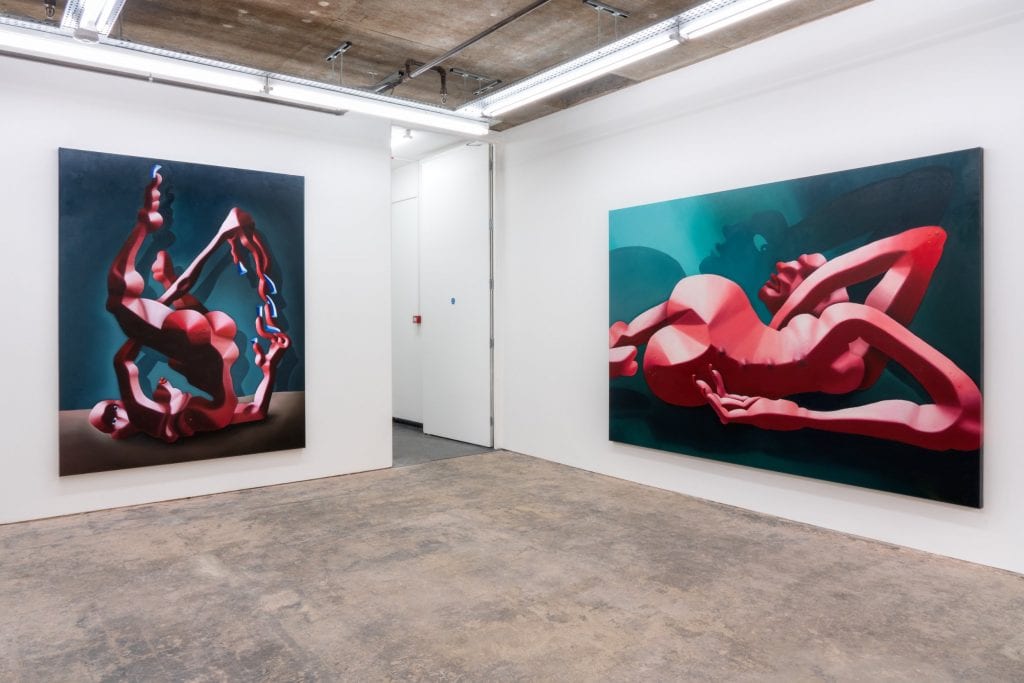
Installation View, It Still Smells of Nothing, 2020, Courtesy of the Artist and PUBLIC Gallery
What larger questions do you think your work asks?
What really helps me is speaking with others about my work. Many of my friends observe my work with me and ask me what my purpose is behind these uncanny figures. The answer is that I really don’t see the characters as uncanny. What I want is to make viewers stop, and give them a break from the typical. I believe since those are the components that attract me to certain things. I don’t think the subjects are uncanny. They’re definitely dramatic, but not uncanny. I see it’s easier for the viewer to be hit on the second level, if they feel like regressing in the first level. So once you’ve removed rationality from the rational viewer, it becomes much easier to converse through their emotion.
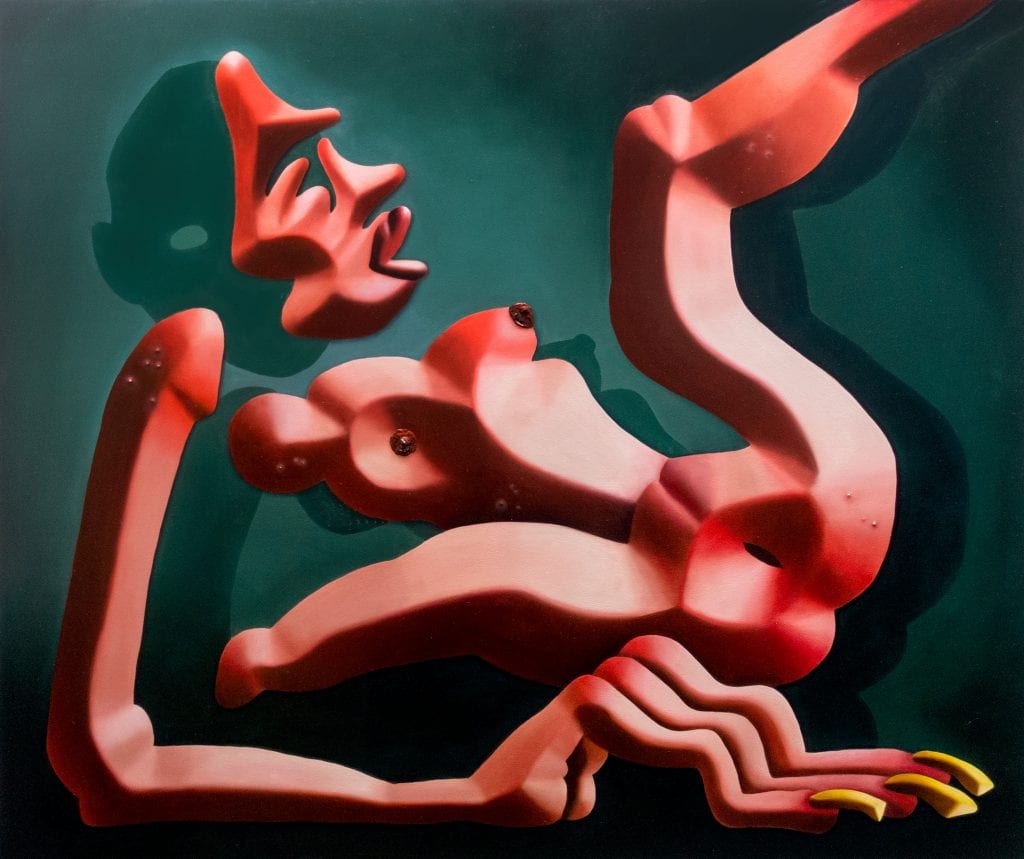
This is Not Surreal!, 2020, Oil on Canvas, Courtesy of the Artist
Does your work reference any Art Historical movements or figures?
I was always fascinated by Egon Schiele, Francis Bacon, and of course Louise Bourgeois. The homage I did in my London show was referred to a soft sculpture by Dorothea Tanning. So I feel those references were obviously influential in my work. I remember as a child seeing a painting in a book by Francis Bacon I believe it was. And I just felt completely moved by it. And I feel it’s since been a feeling I look to convey in someone that experiences my work.
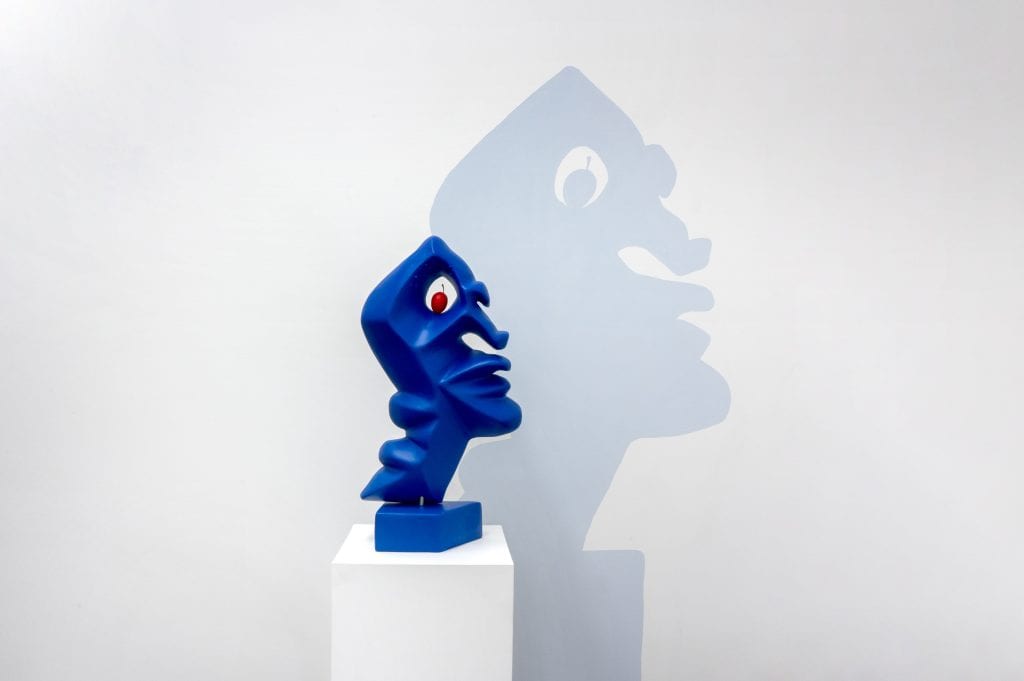
Blue Skull With At Least A Cherry, 2020, Acrylic on Hard Reinforced Foam, Apple Stalk, and Iron, Courtesy of the Artist
What’s next for you?
In terms of my work, I want to learn more about different crafts, especially veered towards my sculptures. As for upcoming shows,
Tanja Wagner in March, 2021
The Art Rotterdam with Amsterdam gallery Marian Cramer which I have mentioned is of course postponed to June, 2021.
The group show with Berlin gallery König will open in March, 2021.
A group show with London gallery Carl Kostyal will take place in April in their new space “The Hospitalet” in Stockholm during Art Week
At the end of each interview we like to ask the artist to recommend a friend whose work you love and would like for us to interview next. Who would you suggest?
Hunter Potter, a dear friend and colleague